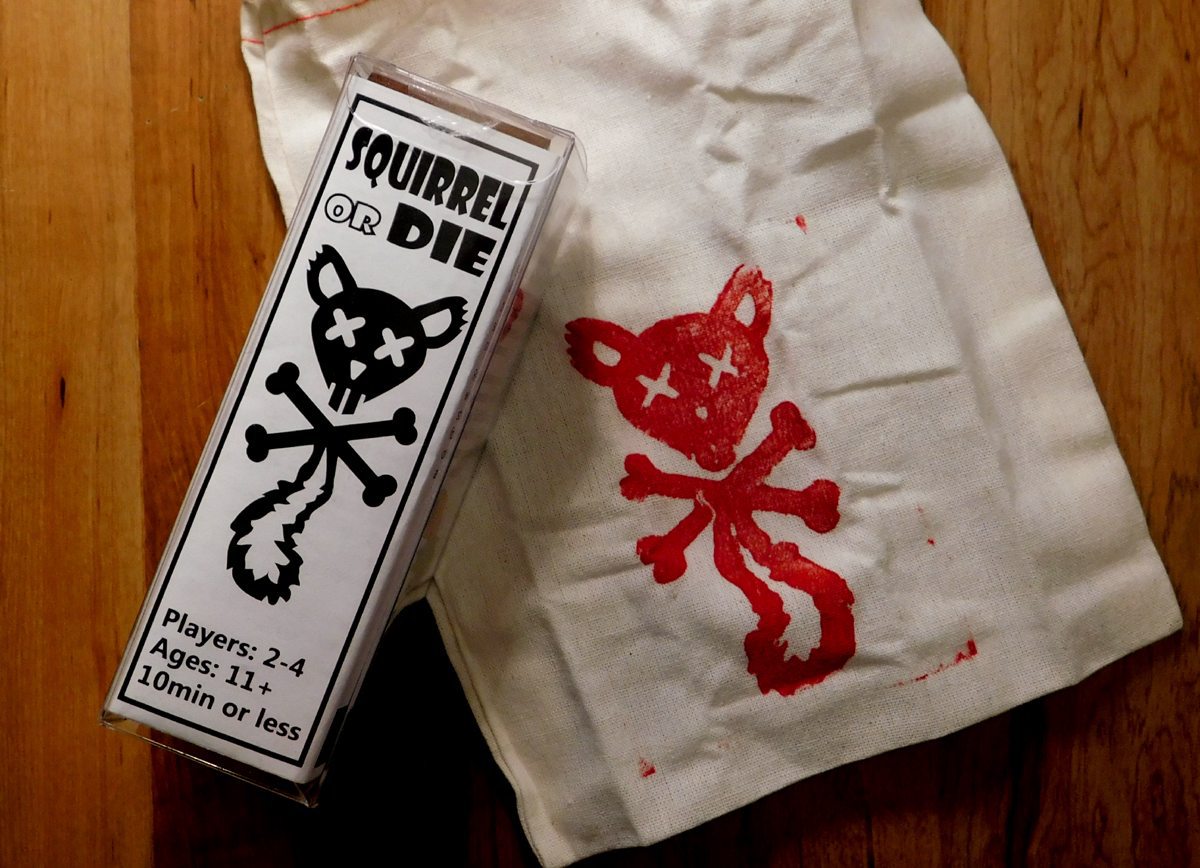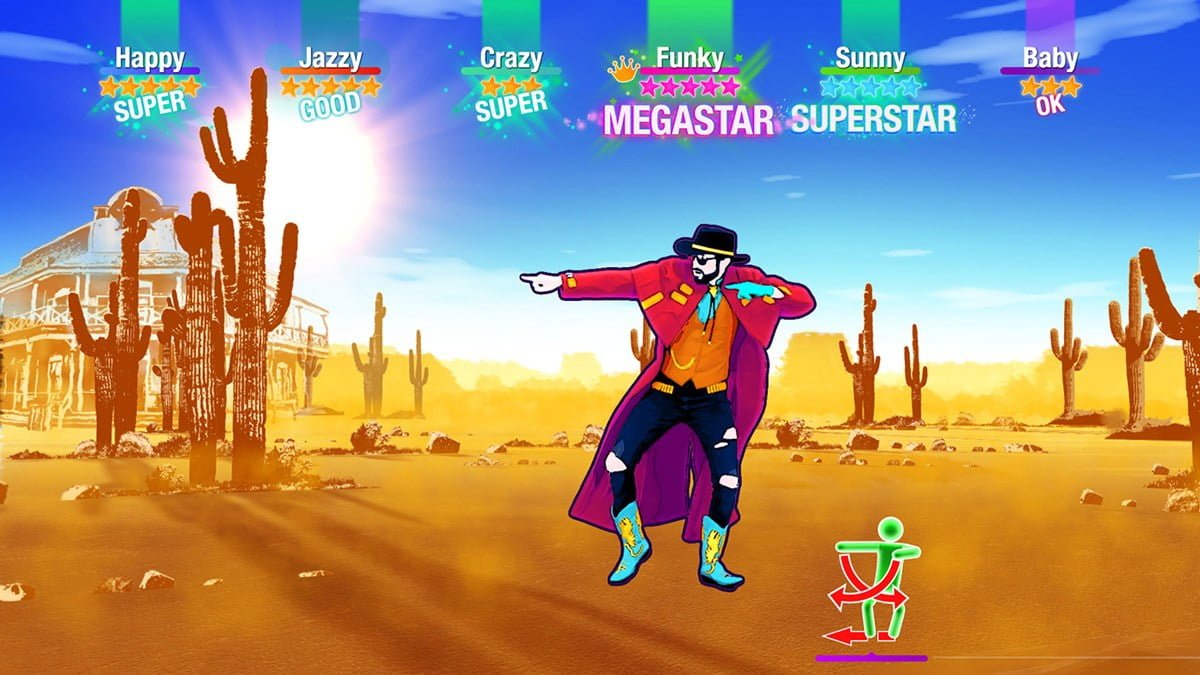
Sometimes, all it takes is a name with just the right amount of whimsy and irreverence to get me to prick up my ears and start listening. Squirrel or Die from designer Seppy Yoon and Fight in a Box Games is just such a title.
Squirrel or Die at a Glance
A 2014 release, Squirrel or Die puts a morbid spin on the classic, tile-flipping game of memory. For 2-4 players and aimed at ages 11+, Squirrel is an easy to learn game about storing up food for the winter, avoiding predators, and maybe even finding some beautiful squirrel love. It plays in a brisk 10-20 minutes, depending on player count, and retails for $10.
It’s important to note that there are two editions of this game. The one pictured in this review is the older, wooden edition, which can still be found in some retail stores, as special promos from the company, or from Seppy himself if you find his booth at a convention ($24.99). Otherwise, this edition has been replaced by a new, card-based version with much larger images and a lower price-point ($10).

The ‘Nuts’ and Bolt of Squirrel (Pardon the pun)
For simplicity’s sake, I am going to refer to my copy of Squirrel or Die, which is the wooden version, but the new edition is similar. The game is made up of a collection of 28 tiles that represent the threats and resources that you must account for. In my older, more expensive edition, these are wooden tiles in a cloth bag. In the current printing, they are a larger, more visual deck of card. There are:
- 13 Food tiles (of various sorts, but the differences are strictly aesthetic)
- 9 Skull tiles
- 1 Double-skull tile
- 1 Again tile
- 1 Sleepy squirrel tile
- 1 Confused cat tile
- 1 Squirrel love tile
- 1 Birdhouse tile (used only in a game variant)
Each of these has simple, evocative artwork that falls somewhere between ‘adorable’ and ‘macabre.’ On the one hand you have a peanut, a flower, a strawberry, while on the other hand you find a bottle of poison, an animal trap, and a squirrel-sized noose. All of which bundles together to feel like the lovechild of The Very Hungry Caterpillar and Edward Gorey.
As you unpack the game, you will probably start thinking that this looks pretty much like every memory-based game you’ve ever seen: lots of tiles with various repeated images that, you suspect, you’ll end up matching. You will be wrong.
How to Play With Your… Squirrels
The game, apart from the fact that it has a bunch of face-down tiles in a grid and is a test of your short-term memory, is entirely something unique.
Setup
This varies depending on the number of players you have, but I will describe the 3-player version of the game.
You start by removing 3 of the skull tiles from the game, leaving behind enough tiles to make a 5×5 grid. One random tile is placed face-down and three face-up to form a 2×2 square, which is your starting board (note: as you play the game you can never exceed a maximum width and height of the tiles. In a 3-player game, this is 5×5).
Now, each player draws 3 tiles that form their hand, which they are allowed to look at secretly (only a foolish squirrel would share this information with his neighbors).

Play
Each turn, players draw and place a face-up tile from the deck. Then, after careful, squirrely-consideration, they take one of the face-up tiles from the board into their hand and replace it with a face-down tile from their hand. So, essentially, players are slowly creating their yard. This is called the Autumn phase and will continue until all the tiles are face-down on the board. (Once you reach the point where there are no tiles left to draw, players continue to place tiles until they are all down.) Next comes winter.
In winter, as you probably guessed, players take turns revealing the hidden tiles. Food is good, and means you live to fight another day. Skulls, unsurprisingly, are bad and 3 skulls equals one dead squirrel, with the last remaining live squirrel being declared the winner. There are a few unique tiles that add a bit of variety, like an extra health, a skipped turn, etc., but mostly you are reenacting the life of a squirrel in autumn and winter: eat food and don’t die.
And that simplicity and humor is what makes Squirrel or Die work.

How is it, in a nut shell? (Sorry, again.)
There isn’t much to like or dislike and your enjoyment of Squirrel or Die will come down to whether or not you enjoy a little black humor draped over a simply-constructed activity.
Yes, Squirrel is a game, but “activity” feels like a better description, something you would do while enjoying jalapeño poppers and rehashing the workweek with friends. It’s a pastime, like Fluxx or Munchkin, but offers just enough to think about to hold your interest for the duration of its short playtime.
An attentive player will probably win more than they lose, but not necessarily, and that’s okay. You have just the right amount to try to remember as you place your tiles that you are engaged, but not so engaged that you won’t be able to enjoy a conversation. It’s a social game that operates with tongue firmly planted in cheek, and at that it succeeds.
Ultimately, Squirrel or Die is the odd game that, while I would never bring it to game night, I would probably carry it with me just about everywhere else.

Click here to see all our tabletop game reviews.
If you’d like to stay up-to-date with all of our tabletop gaming coverage, please copy this link and add it to your RSS reader.




